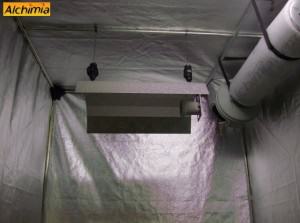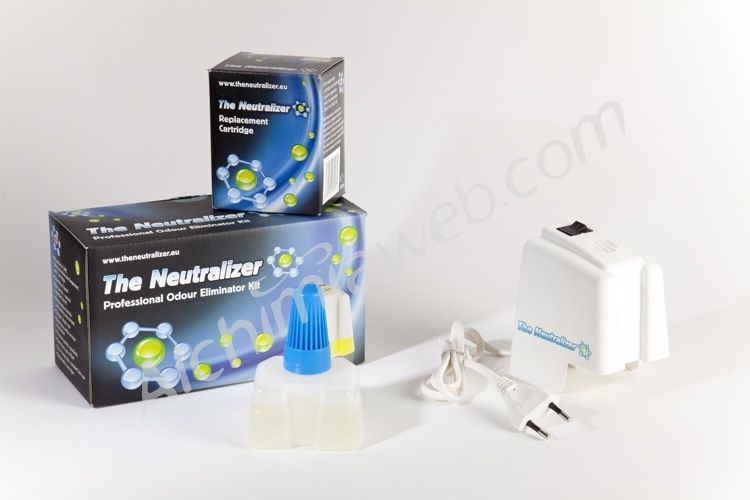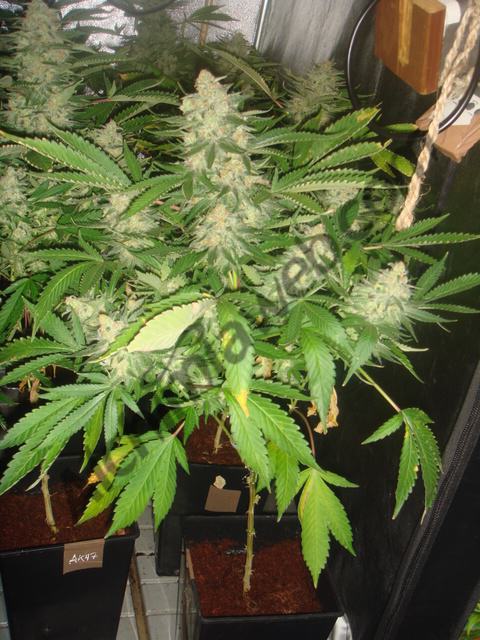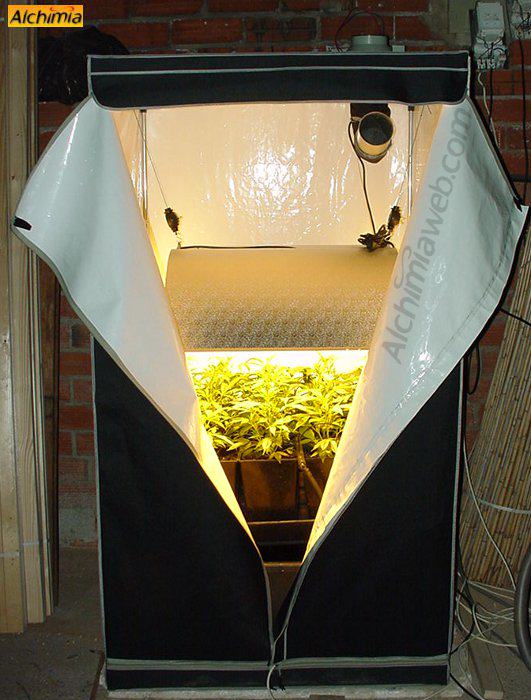How to optimise your cannabis grow with CO²
List of contents
CO², also known as carbon dioxide, occurs naturally in the atmosphere at a ratio of 300/400ppm. Bearing in mind this is the main inorganic component used by cannabis plants to build their tissues, an additional provision of CO² with the right assimilation conditions will result in faster, more robust and productive marijuana plants.

CO² in cannabis cultivation
Increasing the CO² concentration in the air is only recommended when the growing area is enclosed, whether it be a grow tent, a grow room or a greenhouse. It is advisable to turn off the extraction and insertion equipment during the gas release. It should also be noted that plants only use carbon dioxide during the light period, so you can stop giving them CO² one hour before the lamps are switched off.
In an indoor grow, cannabis uses the CO² surrounding the leaves in less than 30 minutes, but this demand rises as the plant's biomass increases, so it’s convenient to have a powerful ventilation system to renew the atmosphere by providing CO²-rich air. In addition to slowing the development of the plants, a lack of carbon dioxide reduces the quality of their organoleptic properties and brings down cannabinoid concentrations.
Crops optimised with CO² perform a more efficient photosynthesis, resulting in a faster and more vigorous growth. When used throughout the whole life cycle of the plants, it can shorten the total growing time by almost a week without compromising the yields.
The plants' resistance to high temperatures is improved, which benefits indoor setups during warmer months, and also gives you the opportunity to bring the lights closer, leading to bulkier buds.
CO² according to the plants' life cycle
Enriching the mother plants’ room air with CO² promotes the development of plant mass, which allows for a significant increase in the production of cuttings. Due to this rapid rise in plant mass and higher nutrient absorption, plants supplied with extra CO² are more likely to suffer from a magnesium deficiency. To sort this out, simply add some Epsom salts to the irrigation water.
Adding CO² during the vegetative period leads to a dramatic plant growth, which could be a problem if you don’t have enough experience. In SCROG setups it can be a useful tool to reduce the duration of the vegetative phase.
The smart way to use CO² in the growing room is from the third week of the flowering period to three weeks before harvest. By doing so, the increase in biomass will result in the formation and development of buds. You should keep an eye for potential bud rot (botrytis) problems due to the size and concentration of these flowers.
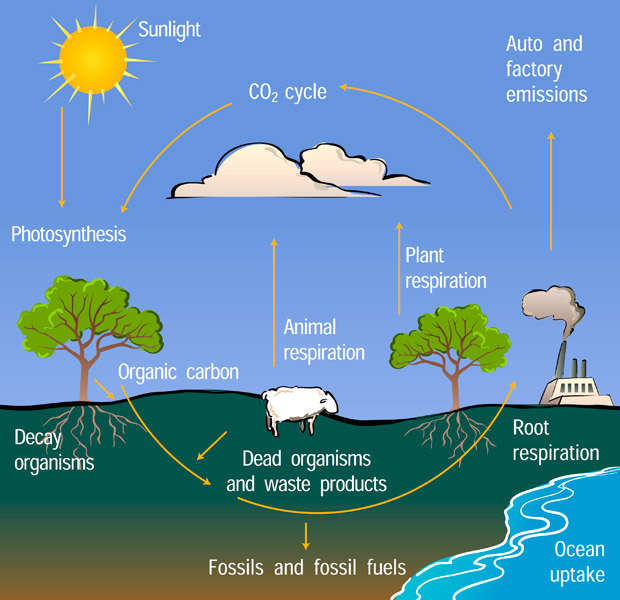
CO² levels and factors influencing assimilation
The maximum CO² level that cannabis plants can process is between 1500 and 2000ppm, but exceeding 1000ppm/1200ppm is not recommended. To avoid stressing the plants, the CO² should be supplied gradually in increments of 100ppm per day, until the desired level is reached. Try to maintain this ideal level until one week before you stop providing CO² to your plants. For the results to be beneficial some conditions must be met:
- Temperature. Maximum CO² assimilation takes place at a constant temperature of 26ºC; in setups properly enriched with CO², the plant will continue to develop even at 32ºC/34ºC.
- Lighting. The best results are achieved with 600w/800w lamps per m2. The increase in photosynthesis rate allows for greater light energy absorption.
- Nutrients. The transpiration rate through the stomata decreases in CO²-enriched environments, leading to lower absorption of water by the roots; which in turn causes a drop in the nutrients that reach the plant. For this reason and in order to get a bountiful harvest, it’s recommended to increase the fertiliser dose.
- Ventilation. CO² is heavier than most of the other gases found in the crop, so it’s essential that the CO² should be administered from a height above the canopy of the plants. Place some fans on the ground, pointing upwards to push the carbon dioxide back up.
CO² can be dispensed with the help of butane gas cylinders, tablets, carbon cartridges, dry ice, and fermentation that allow you to take full advantage of CO² meters and controllers. And of course, there are also some DIY methods.
Compressed CO²
Pumping compressed CO² with a carbon gas cylinder is possibly the most efficient and safe method. For this purpose, you need to get hold of a CO² cylinder with a solenoid valve which, connected to your air control system, will open the CO² bottle as soon as you shut off the grow area’s extractors and inserters.
The Echotechnics Evolution CO² Kit is one of the best tools available in the market. This “toy” measures and doses the CO² to a programmed level, and also controls the temperature and humidity parameters. Needless to say, the extractor will be turned off when the gas is being pumped. When the CO² exceeds the desired concentration the extraction system will start to operate again. The initial investment is high, but when it’s done properly it produces some amazing results well worth the effort.
Co2Boost generator enriches small plantations for up to 90 days, offering a cheap and easy method to get started in carbon dioxide enrichment.
CO² via combustion
There are some devices that generate CO² by combustion with propane or coal gas. In addition to enriching the air with carbon dioxide they generate heat and humidity. When your plants are in the late flowering period, it’s important to be extra careful, as botrytis could ruin the harvest.
One of the tools that work the best, being designed for indoor cannabis cultivation, is the CO² Generator with propane burners. This system consists of 8 burners that start electronically and have a safety lock for potential problems.
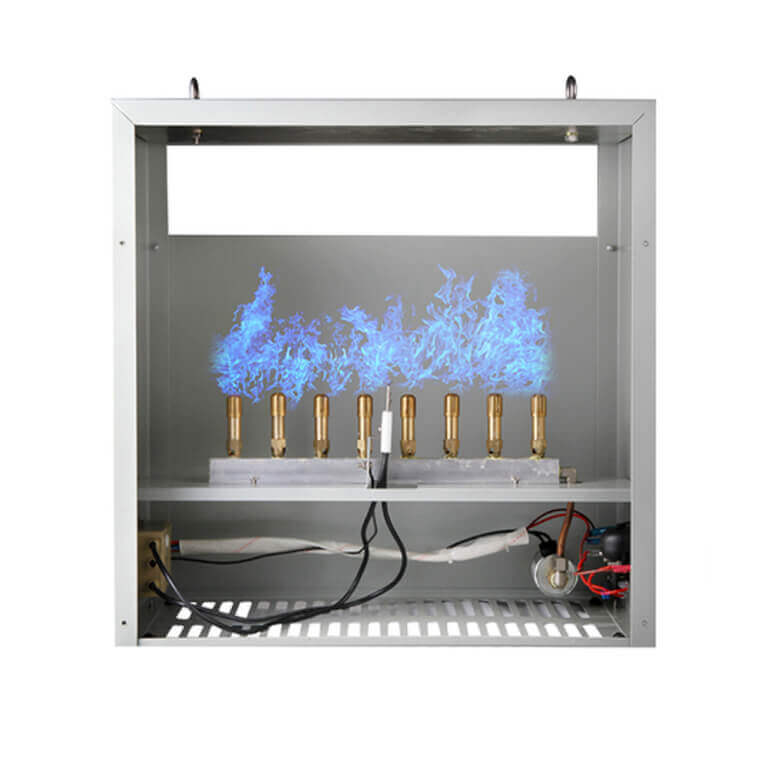
To use this type of system, you need to make sure your setup is safe... The installation of all elements, the burners that generate CO², the electrical wiring and the ventilation, must be in optimal conditions... Any gas leak, along with an electric spark caused by a poor connection or a part in bad shape, can become a time bomb for your growing room. We cannot stress enough the importance of tightening safety measures when installing this CO² generator system.
CO² via fermentation
There are different home-made methods to increase CO² levels in the growing room. The most popular is the chemical reaction caused by combining baking soda and vinegar.
Put some baking soda and vinegar in a container, preferably a drop at a time. For this method to be effective, it must be performed in an area no bigger than 0.6 m2, as CO² is slowly released and it’s hard to reach a level that will produce big changes in the plants.
This method is also available in the form of CO² slow-release canisters like TNB The Enhancer, a ready-made solution that is activated just by adding warm water and releases CO² for up to 1 month.
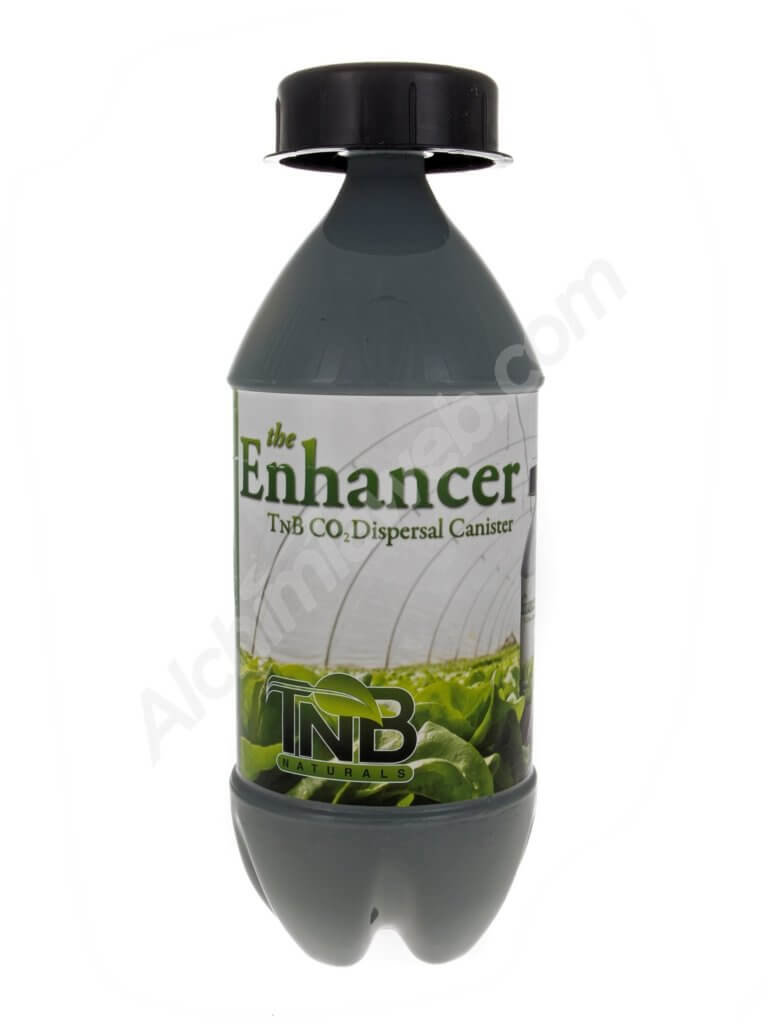
Enriching water with CO²
Enriching the water with CO² tablets is recommended for cultivations where it’s very difficult to maintain the right climate conditions. You should measure and adjust the pH, since the addition of CO² will certainly puch levels downwards. It’s not recommended to dissolve the CO² tablets in water with the fertilisers already mixed; wait till after the administration of CO² to add the nutrients.

CO² toxicity
CO² poisoning is very rare. Some studies suggest that CO² is safe for humans in quantities of up to 15000ppm, whereas other investigations state that it could be toxic during a 45 minutes exposure of 650ppm. To be on the safe side, don’t stay in the area for more than 15 minutes during the application, wait for the ventilation system to be switched on in order to perform the required tasks.
The most common symptoms of CO² poisoning are: shortness of breath, abnormal fatigue, nausea, vomiting and dizziness. If you experience any of these symptoms, get to the open-air immediately.
Enriching your cannabis grow with CO² is not easy, as it depends on several factors that improve with experience. If you think your indoor crop has reached its maximum yields, try boosting the CO² in the air, you'll be amazed by the results!

































































